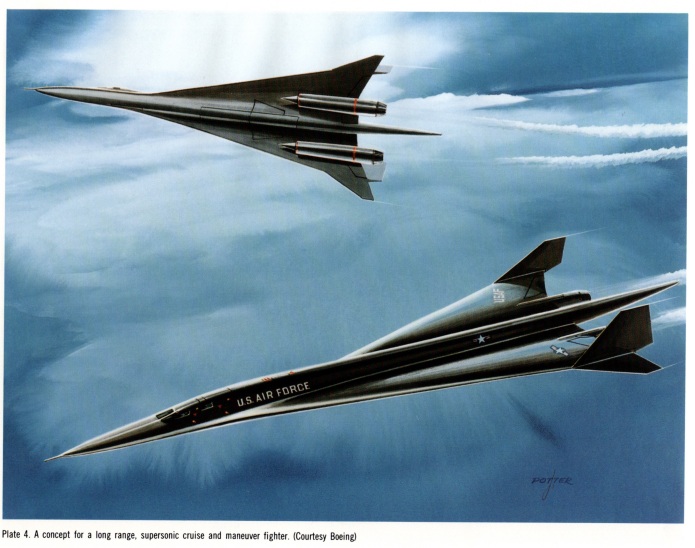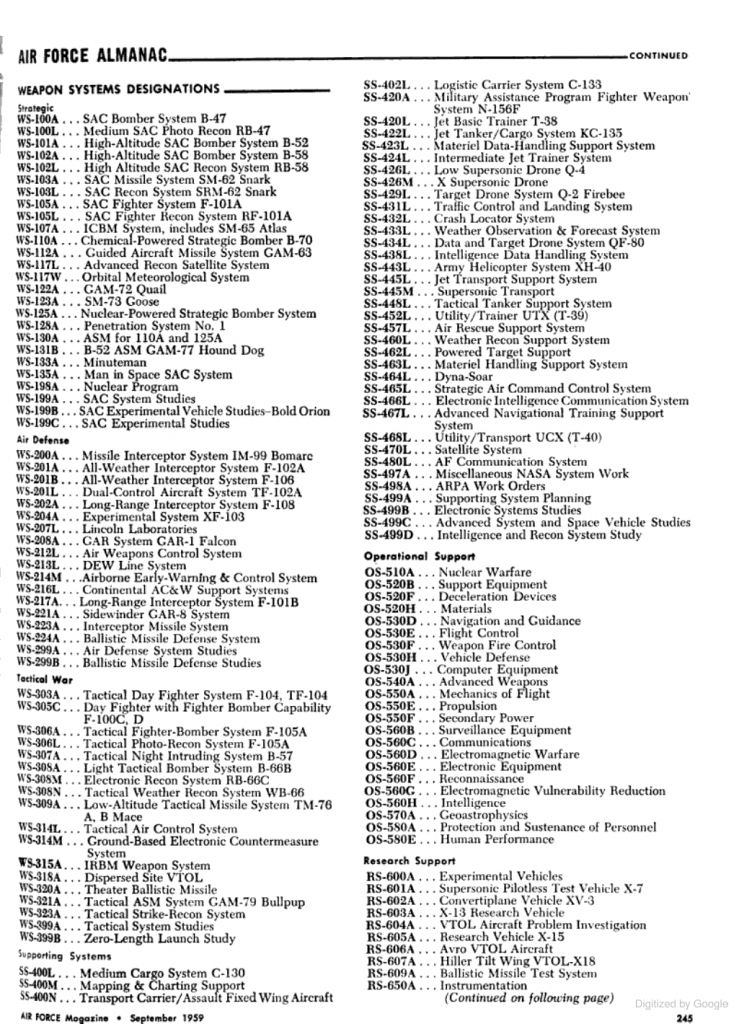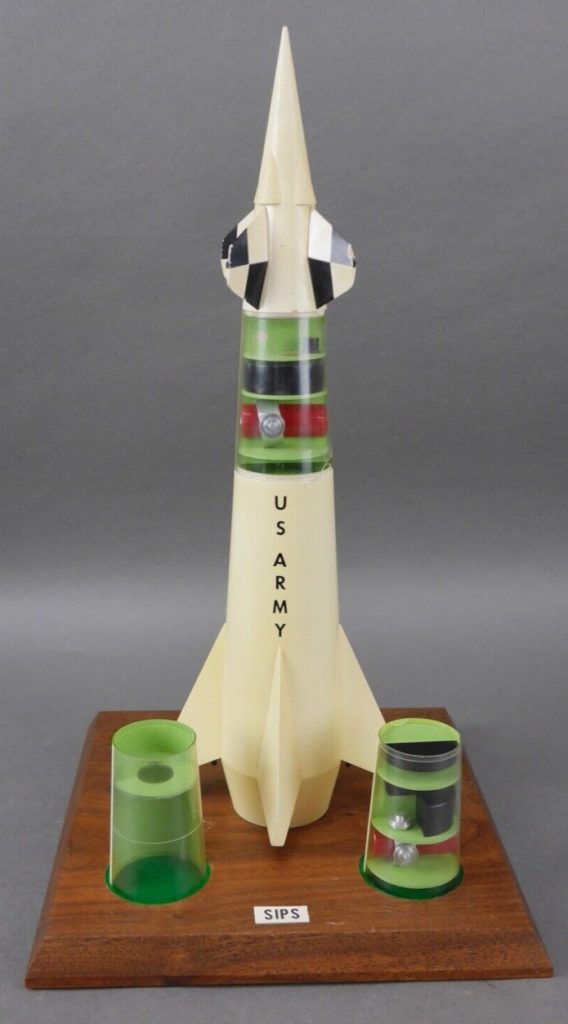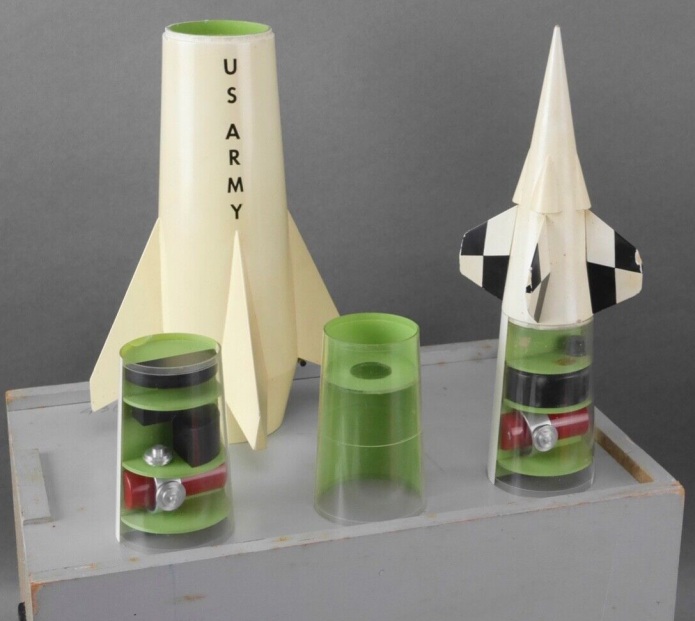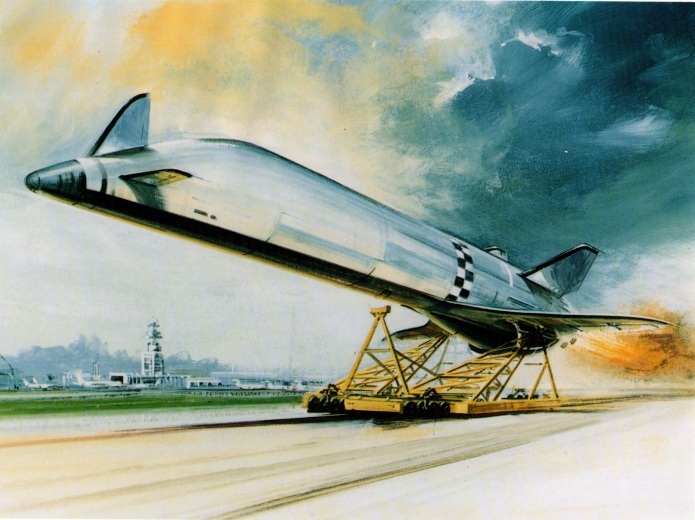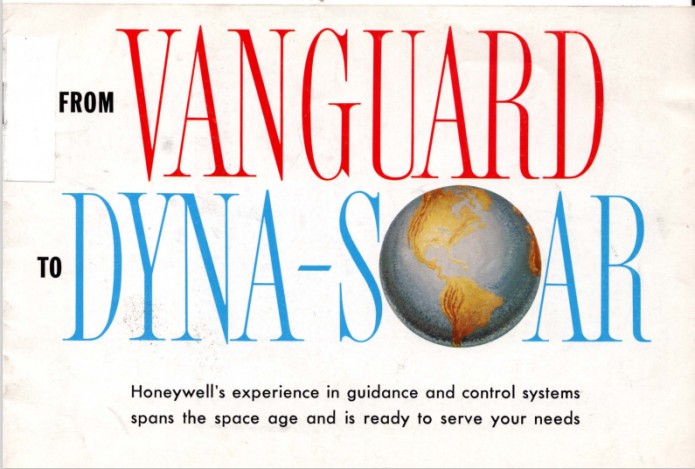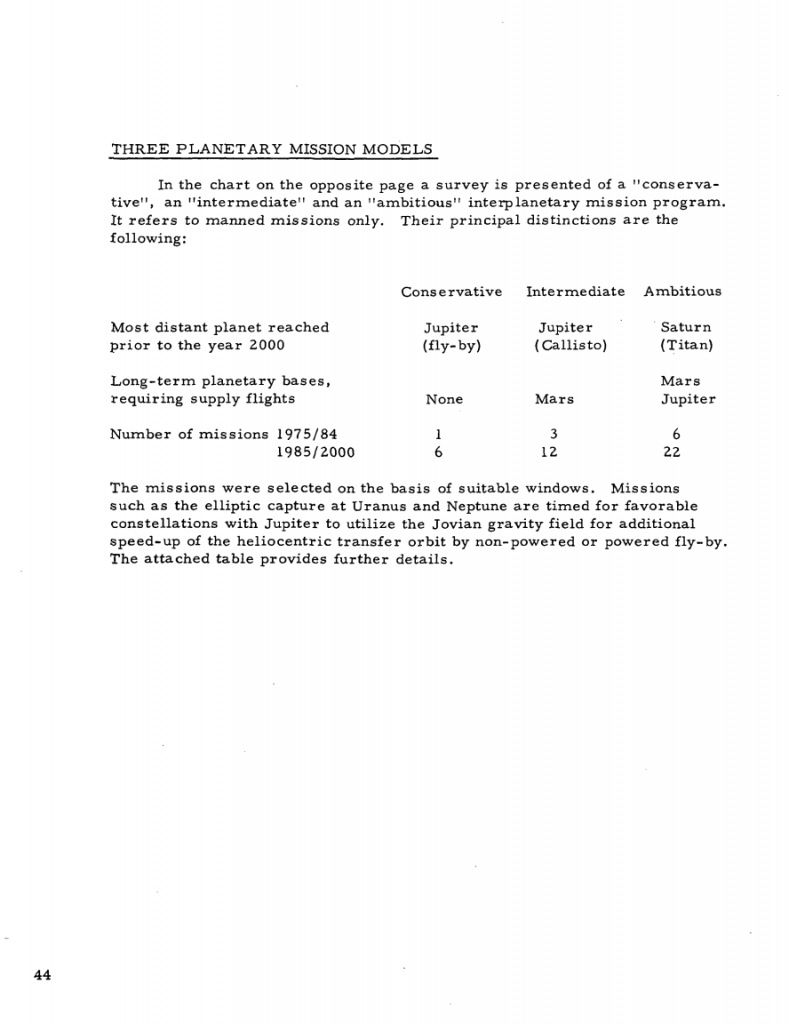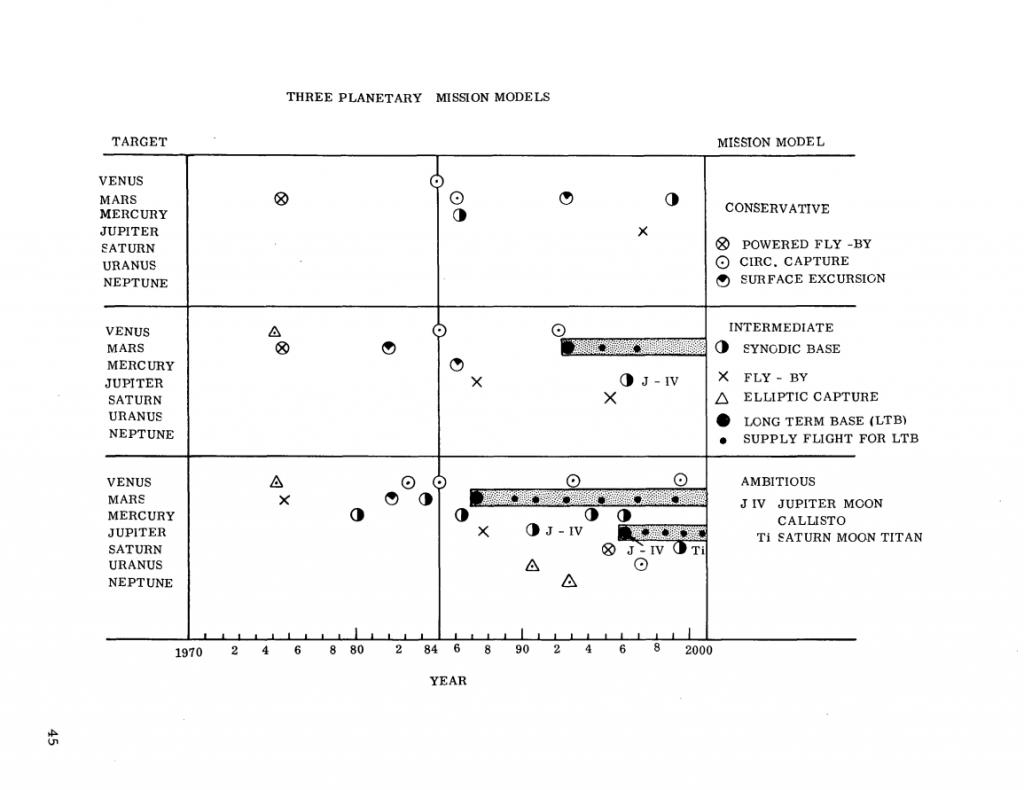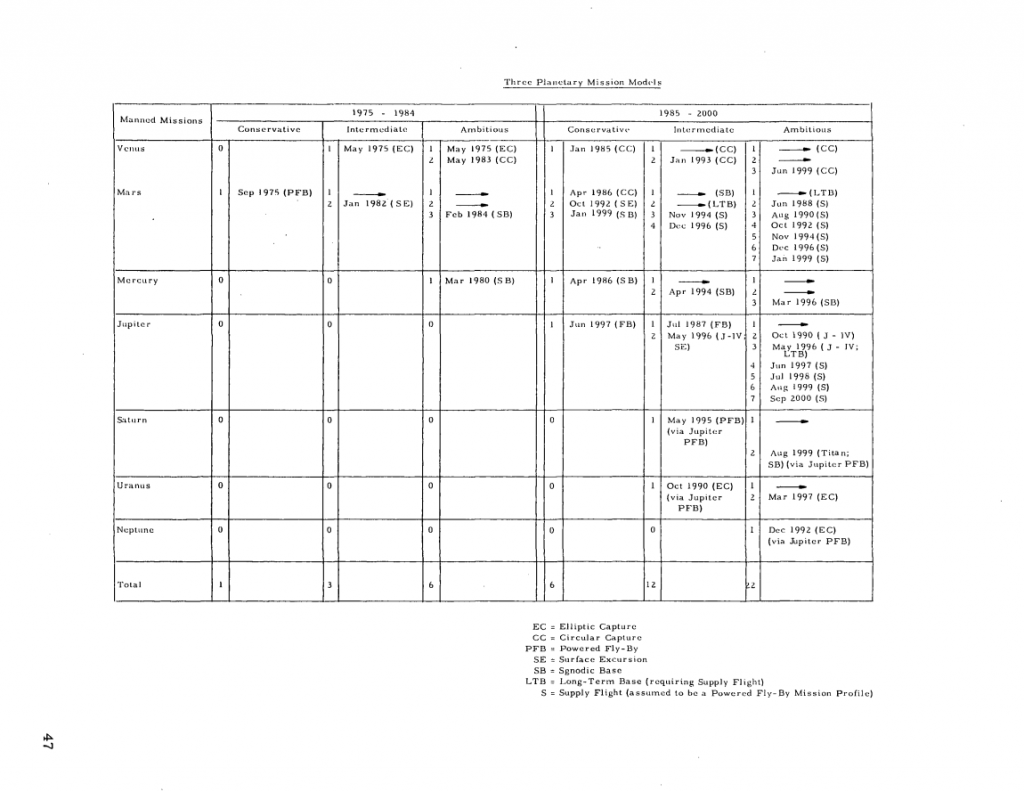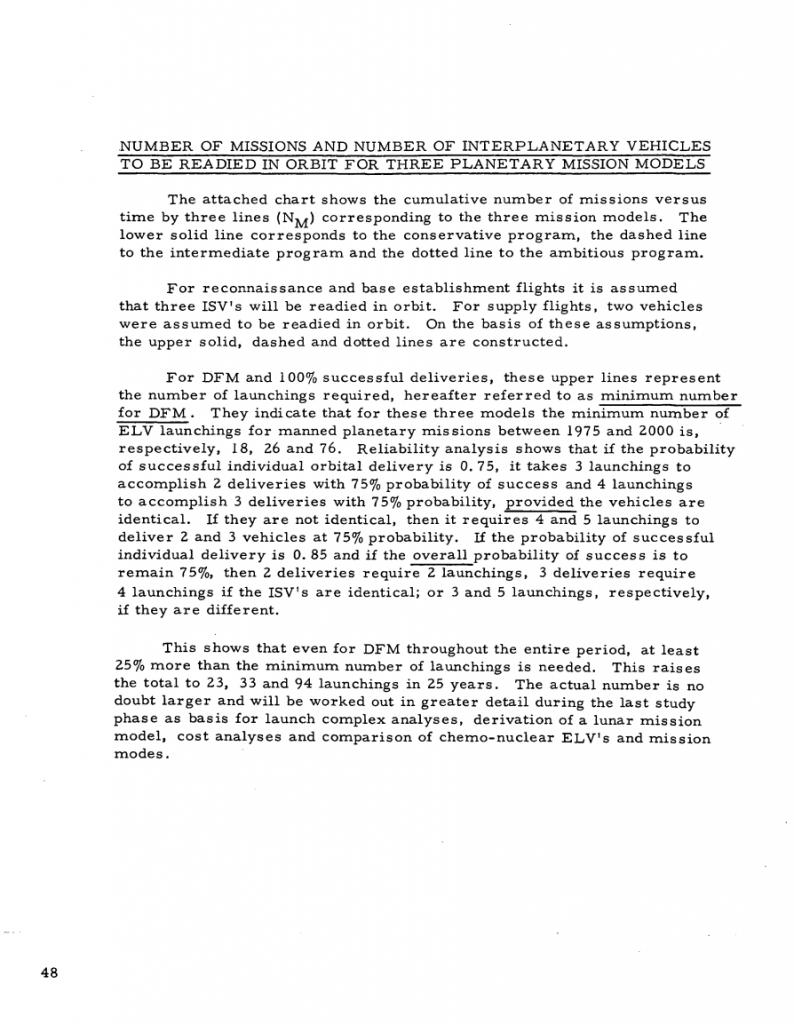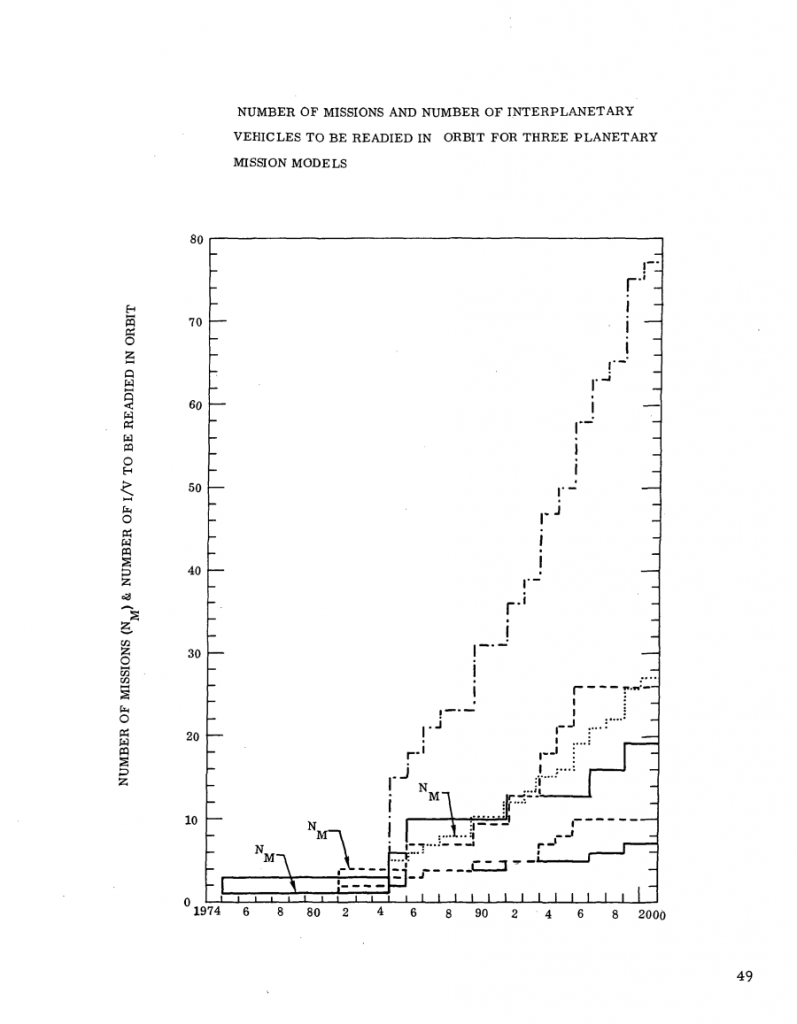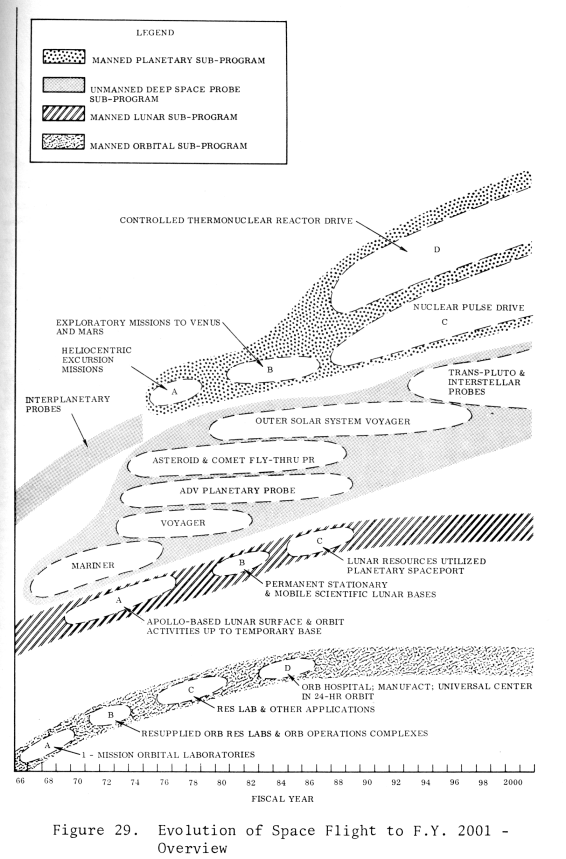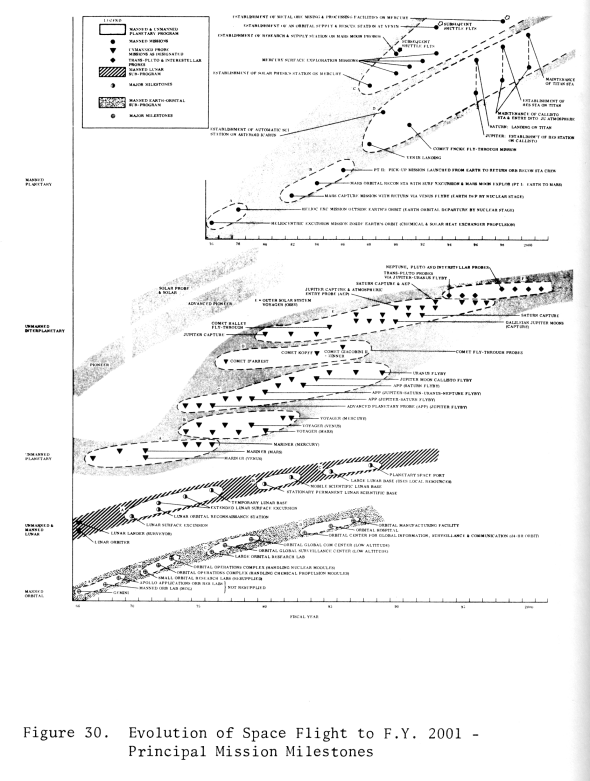The Boeing 733 is *reasonably* well known as the designation for the Supersonic Transport before it got re-designated the 2707. However, Model 733 was sort of a catch-all designation for a long (numerically and temporally) series of designs covering the gamut from giant Mach 2+ SST’s down to bombers, strike aircraft and fighters. The link seems to be that the 733 started off specifically as an SST designation; but other aircraft types were designed using the same aerodynamics. A fighter that was basically a scaled-down SST might be a model 733 (such as the Model 733-605). Shown below is a reasonably commonly reproduced piece of art from the 80’s depicting what is sometimes called the Model 606; it’s actually the Model 733-606. I’ve seen diagrams for a number of aircraft based on this basic geometry; the 733-606-11 and 733-606-12 were strike aircraft. The aircraft below is generally described as an interceptor, sometimes as a supercruise research platform.
The full rez scan of this artwork has been uploaded to the 2022-06 APR Extras folder on Dropbox for APR Patrons and Subscribers.
